One hundred years can seem a relatively short amount of time when viewed in the overall context of the more than six centuries of Middle Temple history. However, while there are areas of life at the Inn in 1922 which are similar to today, some concerns of the time are so far removed from the present day that the world of a century ago seems completely foreign. This month’s ‘Archive of the Month’ will comb through the historic records of the Middle Temple Archive to reveal some of the most notable events of 1922.
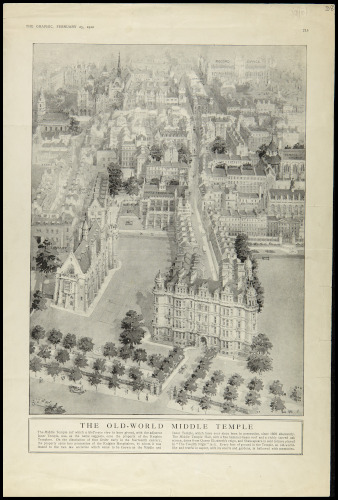
‘The Old-World Middle Temple’ from The Graphic, 25 February 1922 (MT/19/ILL/D/D8/18)
The year started with illness and injury. While the influenza pandemic of 1918 (known as 'Spanish Flu) was over, there was still a great deal of flu circulating in the population. One of the Benchers, Master Wallace, was ill with the flu in January and the Under Treasurer, Major Beresford-Peirse, consoled him by informing him that he’d broken a rib the previous week and ‘am very sorry for myself’. There was worse to come for the administration of the Inn as the Treasurer, Sir Forrest Fulton, contracted the illness in January and was ill for some time. He had a ‘relapse’ at the end of the month and only ‘got down stairs’ at the end of February, missing the first two months of his Treasurership.
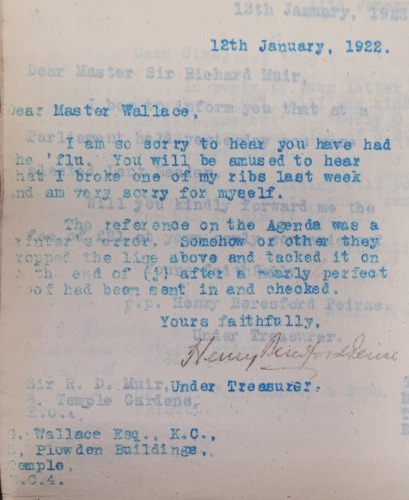
Copy letter sent from the Under Treasurer to Master Wallace regarding his illness and an agenda error, 12 January 1922 (MT/1/LBO/26)
On 23, 24 and 25 February, a production of The Great Duke of Florence, written by Philip Massinger c.1625, was staged in Middle Temple Hall by ‘a distinguished company of amateurs’. The proceeds of the production were to be donated to the Inns of Court Mission, which was a working man’s charity that had 300 adult members and 100 youth members. It had its headquarters in the deprived Drury Lane and was attempting to raise £2000 to buy a meadow in Edmonton, which was intended to become the Halsbury Memorial Playing Field, for its sporting teams to use. Compromise between the company and the Inn was necessary to bring this charitable venture to fruition as the players were adamant that the stage should be beneath the Elizabethan screen at the east end of the Hall. The Treasurer rejected this proposal outright and the Under Treasurer wrote to their representative, Miss Ashton, stating that ‘I am instructed by my Treasurer to inform you that under no circumstances would the erection of a stage at the screen end of Hall be allowed and the decision must be final’. In the end the players compromised their artistic vision and performed the play on the dais.
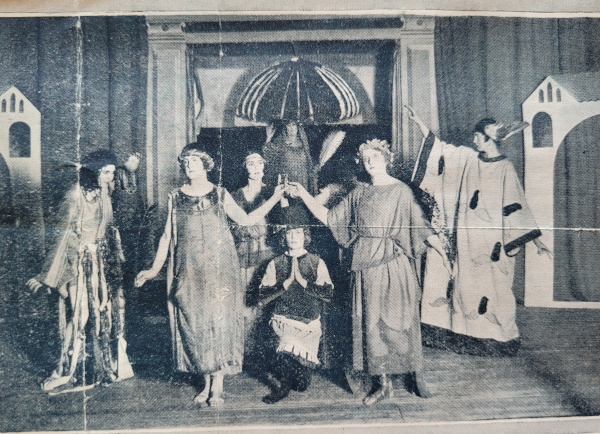
Photograph of the production of The Great Duke of Florence staged in Middle Temple Hall, February 1922 (MT/19/SCR/1)
In February the Inn received a visit from the Director of Works in H.M. Office of Works to inspect and produce a report on the condition of the roof. A casual inspection by the Director found evidence of a wood boring worm in the beams, so a more detailed investigation, followed by strengthening works, was recommended. The Director of Works suggested the installation of scaffolding and the use of draftsmen to document any eccentricity in the beams due to stress or decay. The work would take about three months, which was beyond the length of the Long Vacation in August - this would prevent the use of the Hall during term time, a great inconvenience to the members of the Inn. However, the Benchers recognised the importance of proper maintenance of the Society’s historic Hall and authorised a full investigation.
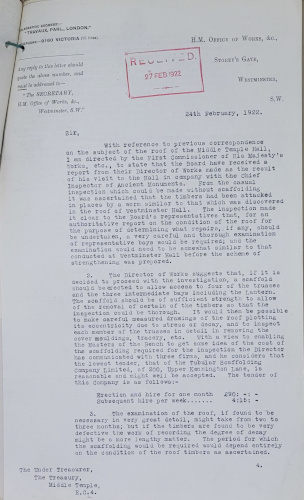
Letter from H.M. Office of Works regarding the condition of the Hall’s roof, 24 February 1922 (MT/6/RBW/225)
In April, an item of silver plate was donated by Miss Elizabeth Balfour-Browne, the daughter of John Hutton Balfour-Browne KC, Treasurer in 1912. Master Balfour-Brown died in 1921 and his daughter gave the cup to the Inn as ‘From conversations with my father, I believe that if he had lived he would have made some gift to his Inn, in which he took so much interest’. The standing cup was the first piece to enter the Inn’s collection by the renowned silversmith Omar Ramsden (1873-1939), a leading designer of silverware in the early 20th century. He would later be commissioned to produce a piece for the Inn by Lord Rothermere, ‘The Three Kings Mazer Bowl’ in 1937, which formed part of the Rothermere Gift, the Inn’s most valuable and prestigious collection of silver. Mr Ramsden personally brought Miss Balfour-Browne’s cup to the Inn and was taken down to the plate room to view his piece in-situ with the other items in the collection.
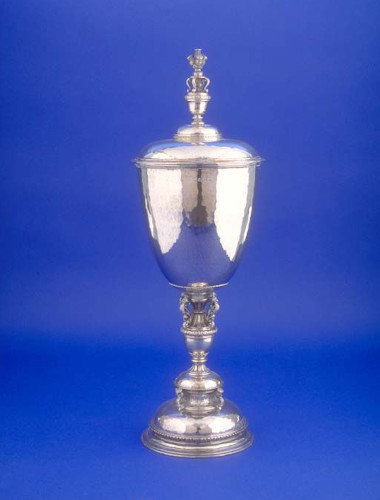
Silver Standing Cup and Cover by Omar Ramsden, 1922, donated by Miss Balfour-Browne
May brought a ‘terrific’ heatwave, which had an adverse effect of the Middle Temple’s famous lawn. This was to the detriment of the Lawn Tennis Club, which used the two tennis courts which were then in the Inn's garden. The condition of the lawn made it impossible to play and the Under Treasurer attempted to assist by requesting that the Inner Temple allow the Middle Temple Lawn Tennis Club to use their tennis courts. However, the condition of Inner Temple’s grass was barely better and only a limited amount of tennis could be played – permission was therefore refused by the Inner Temple. In response, the Lawn Tennis Club proposed that a hard court be built, a request that was rejected by the Inn’s Parliament on 15 June.
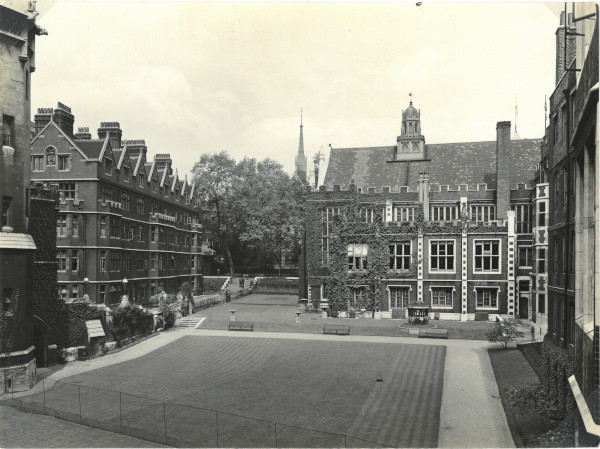
Photograph of the garden from the embankment showing the lawn being mown and prepared for tennis, c.1920-c.1935 (MT/19/PHO/4/1/8)
On the 22 June, The Honourable William H. Taft, Chief Justice of the Supreme Court and former President of the United States of America, was elected an Honorary Bencher. On 5 July, during his tour of Britain, Mr Taft dined in Middle Temple Hall as the Guest of Honour and gave a speech on the occasion. He said that he had ‘from his earliest boyhood venerated the English Bench and the English Bar and today he owed it the deepest personal gratitude’. He was pleased to see how the English justice system functioned and expressed his admiration for its accomplishments as well as a wish to reform some of the procedures of the American Bar. Regretfully, the occasion was not photographed as the Treasurer refused to sanction the use of ‘flashlight’ photography in the Hall for the event.
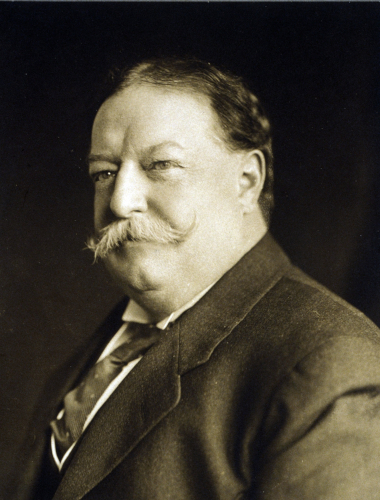
Photograph of The Honourable William H. Taft, Chief Justice of the United States of America © Shutterstock.com
From 6 July to the end of September, the Hall was closed for the investigation of the roof. No dry rot was present, but all the timbers in the examined section were attacked by the death watch beetle (Xestobium rufovillosum), the larvae of which bores its way out of timber and gradually weakens load bearing structures by creating tiny voids within the wood. Although many of the beams were found to be ‘very seriously hollowed out’, it was found to be in much better condition than the roofs at Westminster Hall and the Great Hall at Hampton Court Palace – the suggested reasons for this being the heat and fumes generated by the open fireplace that was in Hall up to 1830 and the large gas chandeliers that were in use during the 19th century. Another possible cause could have been the treatment of the beams with turpentine and oil in 1907, a remedy that was not recommended for any further use in treatment due to the flammable nature of the chemicals and the timbers. The final recommendation of the investigation was for a programme of repairs taking three years to complete and costing between £20,000-£25,000, a vast sum of money at the time.
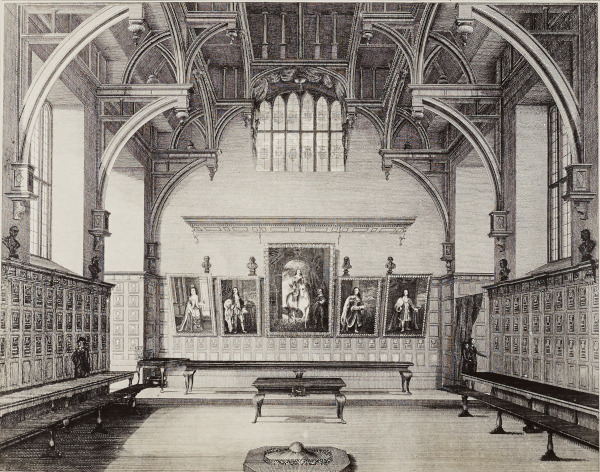
Print of Middle Temple Hall showing the large central fireplace present until the 19th century, c.1800 (MT/19/ILL/D/D2/11)
In September, the Middle Temple and Inner Temple war memorial tablets were delivered to Temple Church. It was only when photographs of the tablets were shown to the Benchers that Master Muir mentioned that he had a son who died in the War and the Under Treasurer was able to get his name on the tablet prior to the unveiling. A service was held on 1 November, All Saints Day, at the Church for the unveiling of the tablets, which was led by the Archbishop of York. During the service, the Archbishop and the Treasurers of the two Inns proceeded to the circular nave where the tablets were installed and the Treasurers simultaneously removed Union Jacks that were covering the memorials.
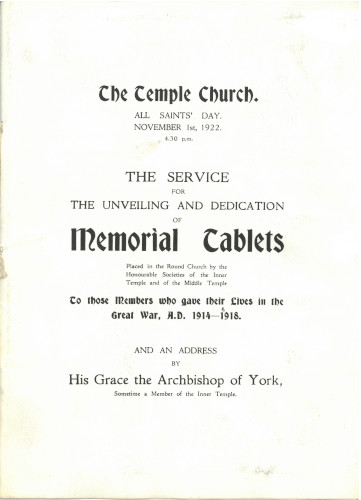
Order of Service for the unveiling of the Temple war memorial tablets, 1 November 1922 (MT/15/TAM/372)
The first cohort of women to be Called to the English Bar at the Middle Temple had their Call ceremony on 17 November and included Helena Normanton, the first woman to be admitted to an Inn of Court after the passing of the Sex Disqualification (Removal) Act 1919. Nine women were Called that day and after the ceremony they dined at two tables near the top of Hall. Several male members broke the rules that kept the female members isolated from the rest of the membership, and went up to the first female barristers to drink their health.
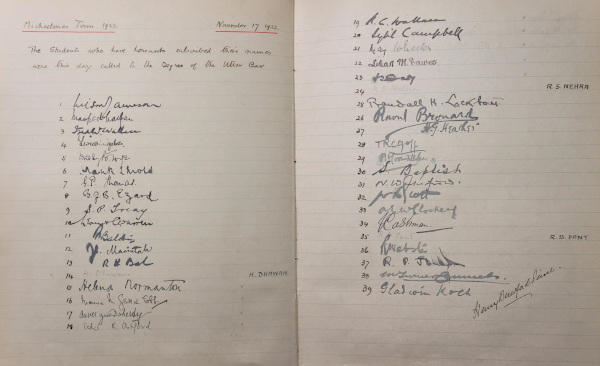
Signatures in the Call signatures book of the first women to be Called to the Bar at the Middle Temple, 17 November 1922 (MT/3/CMV/2)
On 7 November, Buckingham Palace sent a telegram to the Treasury requesting that H.R.H. Edward, Prince of Wales be invited to dine in Hall for Grand Day on 21 November. The Prince of Wales was elected a Royal Bencher of the Middle Temple in 1919 and would leave the Society bereft of a Royal patron on his abdication of the throne in 1936. Grand Day in 1922 was the first time since his election to the Bench that he had dined in Hall, and due to the popularity of the event a ballot was held to assign seats. This occasion was also notable as the first large event at which the women barristers and students of the Inn dined with the male members.
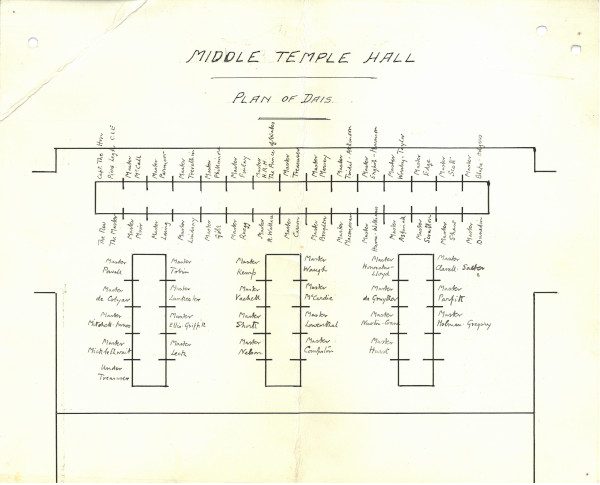
Seating plan for the Grand Day Dinner attended by H.R.H. Edward, Prince of Wales, 21 November 1922 (MT/7/ROY/5/8)
The final event of significance in 1922 was the unveiling of the National Submarine War Memorial on 15 December. The memorial itself is situated at the top of Temple Pier, the successor to Temple Stairs after the embankment was constructed in the 1860s, and takes the form of a large bas relief on granite steps. The memorial was funded by public subscription to commemorate the fifty submarines lost during the First World War. The memorial was unveiled by Rear-Admiral Bertram Taylor and dedicated by the Chaplain of the Fleet, Archdeacon Charles Ingles. A service was held to commemorate the occasion in Temple Church and a tea was held in the Parliament Chamber afterwards.
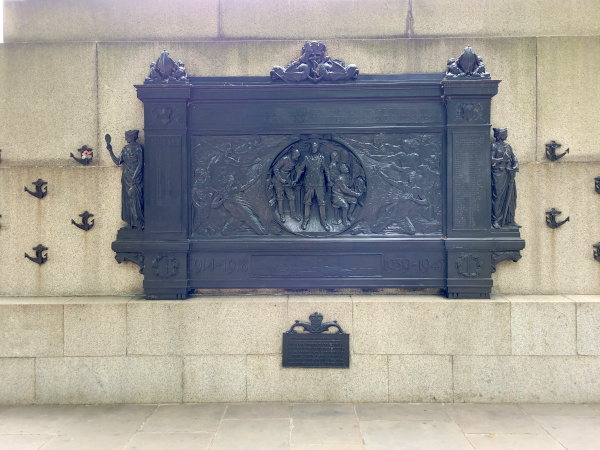
Photograph of the National Submarine War Memorial, unveiled on 15 December 1922
The year 1922 was particularly notable with the first women to be Called to the Bar being a significant milestone. There were important visits by leaders, charitable works by and gifts to the Inn, the erection of war memorials, important maintenance of the Society’s historic Hall and problems caused by the climate. And like almost every eventful year in the history of the Inn it doubtless passed in a flash, with the year 1923 quickly beckoning on the horizon and time ticking relentlessly forward.